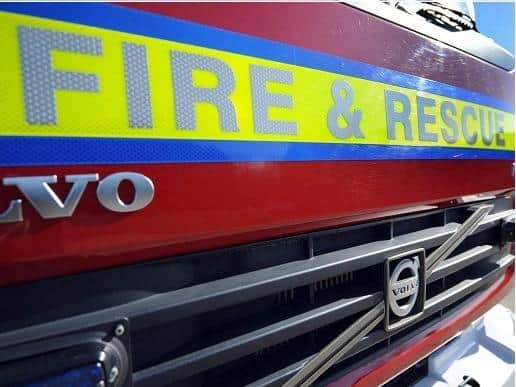Trial of ‘alternative’ new fire engine in Berkhamsted to start by end of this year
and live on Freeview channel 276
Delayed Fire and Rescue Service plans to trial ‘alternative’ vehicles in Hertfordshire are expected to go-ahead by the end of the year.
Back in 2019, county councillors agreed to controversial plans for the fire service to trial the use of two smaller types of vehicles.
Advertisement
Hide AdAdvertisement
Hide AdThe ‘rapid response vehicle’ – equipped to deal with 80 per cent of call-outs – was due to be trialled in Watford.


And an ‘intermediate response vehicle’ was due to be trialled at the fire station in Berkhamsted
Fire chiefs said the vehicles would then form part of a mixed fleet that could provide a faster and more effective response.
But the trials – given the go-ahead two years ago, in July 2019 – have yet to start.
Advertisement
Hide AdAdvertisement
Hide AdAt a meeting of the county council’s public health and community safety cabinet panel, on Friday (June 11) councillors heard that there had been delays, as a result of the Covid-19 pandemic.
But it was reported that those trials were now expected to begin later this year (2021).
Area commander Simon Tuhill said Covid-19 had impacted on the ability of the service to research available vehicles and on the supply available.
But he said an order had now been placed for the ‘rapid response vehicle’ (RRV), which is expected to arrive in late 2021.
Advertisement
Hide AdAdvertisement
Hide AdAnd he said the ‘intermediate response vehicle’ (IRV) – similar to a traditional fire engine, but smaller – was expected to arrive ‘shortly after this’.
The trials of each vehicle are now expected to start by the end of the year and to continue for 12 months.
Meanwhile councillors were told that the service had already moved ahead with an evaluation of equipment usage – with firefighters at Watford and Berkhamsted now recording the equipment they use at every incident.
And that, it was said, would determine what equipment should be stowed on smaller vehicles, which could vary according to the time of year.
Advertisement
Hide AdAdvertisement
Hide AdAt the meeting, Cllr Judi Billing said she was “nonplussed and shocked” that the service was not yet at the point where they were using the smaller vehicles.
She said her assumption was that in future they would need to use smaller vehicles in many areas of the county, where it is hard for fire engines to access areas because of parking.
And she suggested the county may need a ‘plethora’ of the new sized engines.
Mr Tuhill suggested that a ‘one-size’-fits-all’ approach was not suitable – but stressed that he wouldn’t want to have only small or only large vehicles.
Advertisement
Hide AdAdvertisement
Hide Ad“I think that a mixed fleet gives us that capability to move things around,” he said.
Meanwhile it was noted that other proposals – involving the reduction of crew sizes from five to four – were still at the preparation stage.
However, said Mr Tuhill: “It is worthy of note that actually for the last year or 18 months throughout the pandemic we have already been riding with four firefighters on our fire engines to assist in social distancing.
“In some ways the concept has been running for the last year and a bit with no negative impacts recorded.”